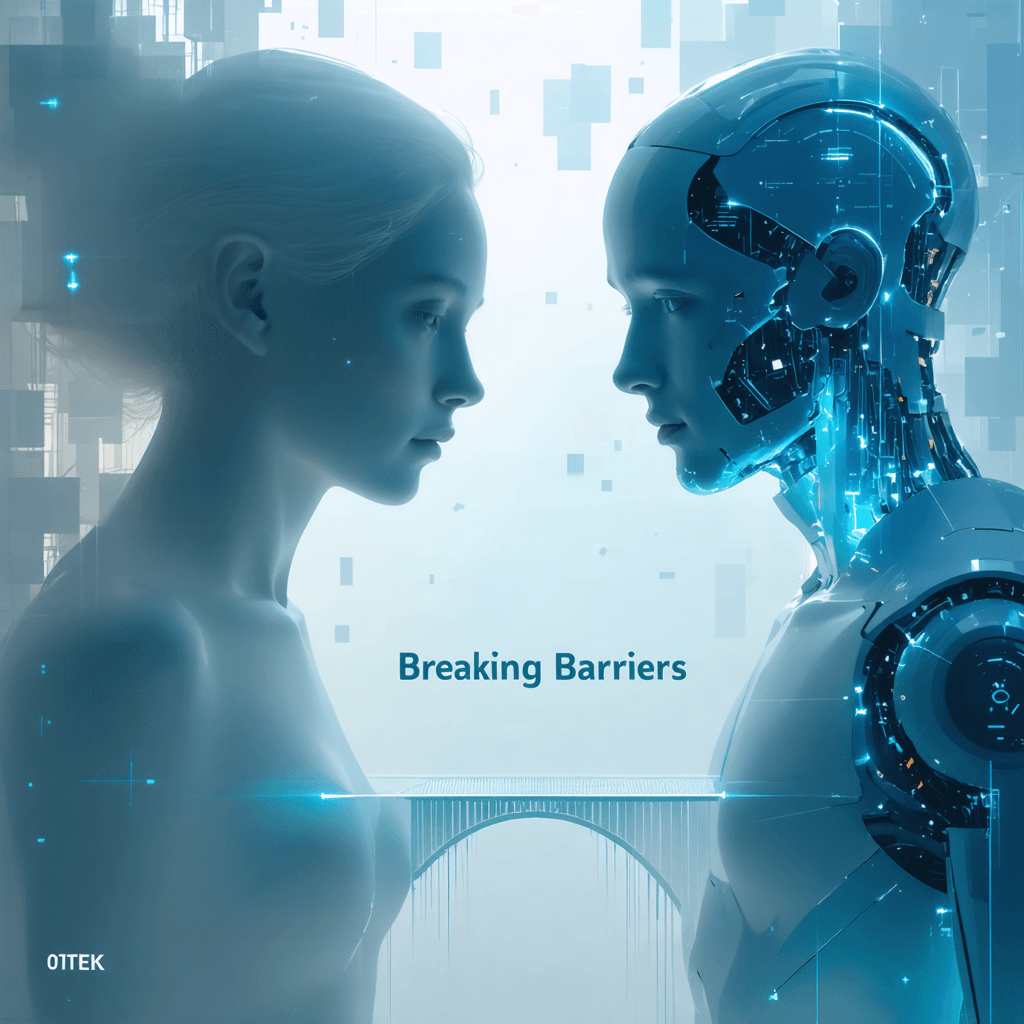Breaking Barriers: How Human Teams and AI Systems Navigate the Future of Collaborative Intelligence
The future of work is being dramatically reshaped by the unprecedented convergence of human expertise and artificial intelligence. As we navigate this transformative era, organizations are discovering that success lies not in choosing between human or machine intelligence, but in mastering their synergy. Let's explore how teams and AI systems are breaking down traditional barriers to create a new paradigm of collaborative intelligence.
The Evolution of Human-AI Collaboration

The workplace of 2025 has evolved far beyond the initial fears of AI replacement. Instead, we're witnessing the emergence of what experts call "collaborative intelligence" – a powerful combination of human intuition, creativity, and emotional intelligence with AI's processing power, pattern recognition, and data analysis capabilities.
According to recent McKinsey research, companies that effectively implement human-AI collaboration are seeing threefold increases in productivity compared to traditional work methods. This success isn't just about implementing new technologies; it's about fundamentally reimagining how humans and machines can complement each other's strengths.
Key Elements of Successful Human-AI Teams
1. Clear Role Definition
The most successful organizations have clearly defined roles for both human team members and AI systems. Humans excel at:
- Strategic thinking and creative problem-solving
- Emotional intelligence and interpersonal relationships
- Ethical decision-making and value judgments
- Complex context understanding
Meanwhile, AI systems are optimized for:
- Processing vast amounts of data
- Identifying patterns and trends
- Automating repetitive tasks
- Providing real-time analytics and insights
2. Adaptive Learning Systems
Modern AI systems are designed to learn from their human counterparts continuously. This two-way learning street ensures that both humans and AI systems evolve together, creating an ever-improving cycle of collaboration and innovation.
3. Trust and Transparency
Building trust between human team members and AI systems is crucial. Organizations are implementing:
- Clear AI decision-making processes
- Regular performance audits
- Transparent communication about AI capabilities and limitations
- Ongoing training and support for team members
Practical Implementation Strategies
Creating a Collaborative Framework
Start with Purpose
- Define clear objectives for human-AI collaboration
- Identify specific areas where AI can enhance human capabilities
- Establish measurable success metrics
Invest in Skills Development
- Train employees in AI literacy and digital skills
- Develop new leadership competencies for managing hybrid teams
- Foster a culture of continuous learning
Design Inclusive Workflows
- Create processes that seamlessly integrate human and AI contributions
- Establish feedback loops for continuous improvement
- Implement collaborative tools that support hybrid teamwork
Overcoming Common Challenges
1. Resistance to Change
Many organizations face initial resistance when implementing AI collaboration. Success stories show that:
- Gradual implementation yields better results
- Early wins build confidence
- Involving team members in the planning process increases buy-in
2. Skills Gap

Organizations are addressing the skills gap through:
- Comprehensive training programs
- Mentorship initiatives
- Partnerships with educational institutions
- Internal knowledge-sharing platforms
3. Integration Challenges
Technical integration must be carefully managed through:
- Robust change management processes
- Clear communication channels
- Regular system updates and maintenance
- Strong IT support infrastructure
Future Trends and Opportunities
Looking ahead, we can expect to see:
- More sophisticated AI collaboration tools
- Enhanced natural language processing capabilities
- Greater emphasis on ethical AI development
- Increased focus on emotional intelligence in AI systems
- New roles emerging at the intersection of human and AI capabilities
Best Practices for Success
Foster a Culture of Innovation
- Encourage experimentation
- Celebrate successful collaborations
- Learn from failures
- Share success stories across the organization
Maintain Human-Centric Design
- Keep human needs at the center of AI implementation
- Design systems that enhance rather than replace human capabilities
- Prioritize user experience in collaborative tools
Ensure Ethical Implementation
- Develop clear guidelines for AI use
- Regular ethical audits
- Maintain transparency in decision-making
- Protect privacy and data security
Conclusion
The future of collaborative intelligence lies in creating harmonious partnerships between human teams and AI systems. Organizations that successfully navigate this transformation will gain significant competitive advantages while creating more engaging and fulfilling work environments for their employees.
Ready to take the next step in your AI journey? Explore our comprehensive courses and resources at 01TEK to help your team master the art of human-AI collaboration. Visit 01TEK.com to learn more about our cutting-edge training programs and start building your future-ready workforce today.
Sources: 1. Stanford HAI 2025 Predictions 2. Atlassian Team Collaboration Report 3. McKinsey AI Workplace Report 4. World Economic Forum AI Collaboration Guide 5. Deloitte Human Capital Trends 2025
The greatest reward in becoming a millionaire is not the amount of money that you earn. It is the kind of person that you have to become to become a millionaire in the first place.
Jim Rohn




